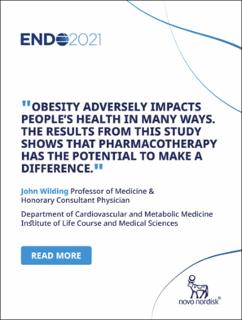| dc.contributor.author | Berge, Jarle | |
| dc.contributor.author | Hjelmesæth, Jøran | |
| dc.contributor.author | Hertel, Jens Kristoffer | |
| dc.contributor.author | Gjevestad, Espen Svendsen | |
| dc.contributor.author | Småstuen, Milada Cvancarova | |
| dc.contributor.author | Johnson, Line Kristin | |
| dc.contributor.author | Martins, Catia | |
| dc.contributor.author | Andersen, Eivind | |
| dc.contributor.author | Helgerud, Jan | |
| dc.contributor.author | Støren, Øyvind | |
| dc.date.accessioned | 2021-04-21T11:16:16Z | |
| dc.date.available | 2021-04-21T11:16:16Z | |
| dc.date.created | 2021-02-01T11:45:42Z | |
| dc.date.issued | 2021 | |
| dc.identifier.citation | Berge, J., Hjelmesæth, J., Hertel, J. K., Gjevestad, E., Småstuen, M. C., Johnson, L. K., ... & Støren, Ø. (2021). Effect of Aerobic Exercise Intensity on Energy Expenditure and Weight Loss in Severe Obesity—A Randomized Controlled Trial. Obesity, 29(2), 359-369. | en_US |
| dc.identifier.issn | 1930-7381 | |
| dc.identifier.uri | https://hdl.handle.net/11250/2738865 | |
| dc.description.abstract | Objective: This study aimed to compare the effects of two aerobic exercise programs of different intensities on energy expenditure.
Methods: This was a single‐center randomized controlled trial of patients with severe obesity allocated to a 24‐week moderate‐intensity continuous training (MICT) program or a combined MICT with high‐intensity interval training (HIIT/MICT) program. The primary outcome was energy expenditure during exercise (EEDE). Secondary outcomes included resting metabolic rate, cardiorespiratory fitness, and body composition.
Results: A total of 82 (56% females) patients were screened, and 71 (55% females) patients were allocated to HIIT/MICT (n = 37) or MICT (n = 34). Per‐protocol analysis showed that EEDE increased by 10% (95% CI: 3%‐17%) in the HIIT/MICT group (n = 16) and 7.5% (95% CI: 4%‐10%) in the MICT group (n = 24), with no differences between groups. In the 8‐ to 16‐ week per‐protocol analysis, the HIIT/MICT group had a significantly larger increase in EEDE compared with the MICT group. Resting metabolic rate remained unchanged in both groups. HIIT/MICT and MICT were associated with significant weight loss of 5 kg and 2 kg, respectively.
Conclusions: Patients completing a 24‐week combined HIIT/MICT program did not achieve a higher EEDE compared with those who completed a 24‐week MICT program. The HIIT/MICT group experienced, on average, a 3‐kg‐larger weight loss than the MICT group. | en_US |
| dc.language.iso | eng | en_US |
| dc.rights | Attribution-NonCommercial-NoDerivatives 4.0 Internasjonal | * |
| dc.rights.uri | http://creativecommons.org/licenses/by-nc-nd/4.0/deed.no | * |
| dc.title | Effect of Aerobic Exercise Intensity on Energy Expenditure and Weight Loss in Severe Obesity—A Randomized Controlled Trial | en_US |
| dc.type | Journal article | en_US |
| dc.type | Peer reviewed | en_US |
| dc.description.version | publishedVersion | en_US |
| dc.rights.holder | © 2021 The Authors. | en_US |
| dc.source.pagenumber | 359-369 | en_US |
| dc.source.volume | 29 | en_US |
| dc.source.journal | Obesity | en_US |
| dc.source.issue | 2 | en_US |
| dc.identifier.doi | https://doi.org/10.1002/oby.23078 | |
| dc.identifier.cristin | 1884921 | |
| cristin.ispublished | true | |
| cristin.fulltext | original | |
| cristin.qualitycode | 1 | |

